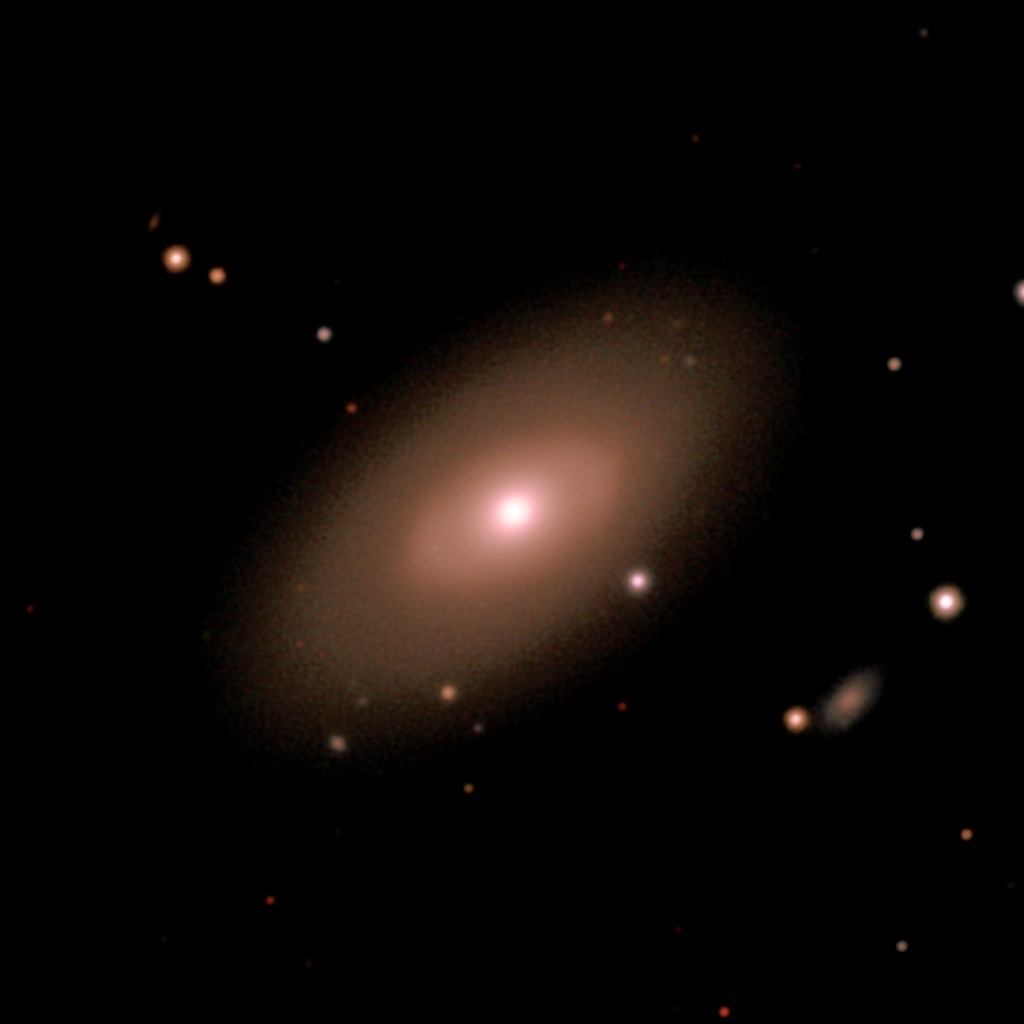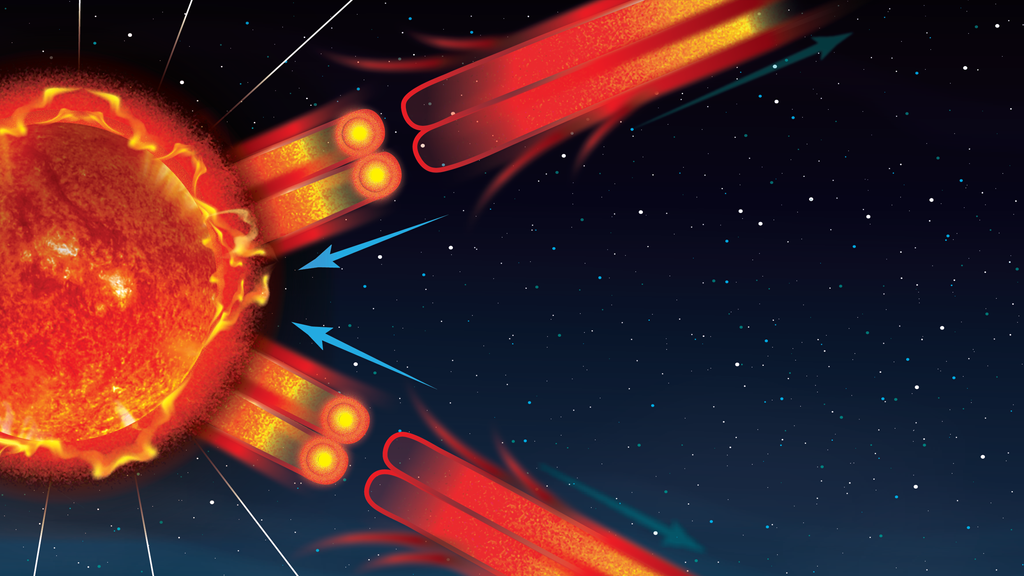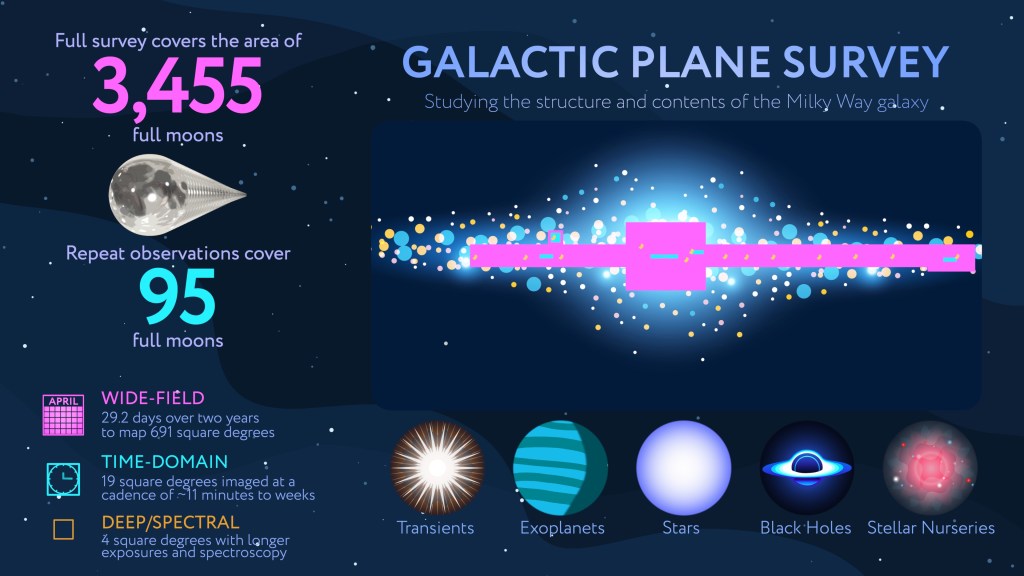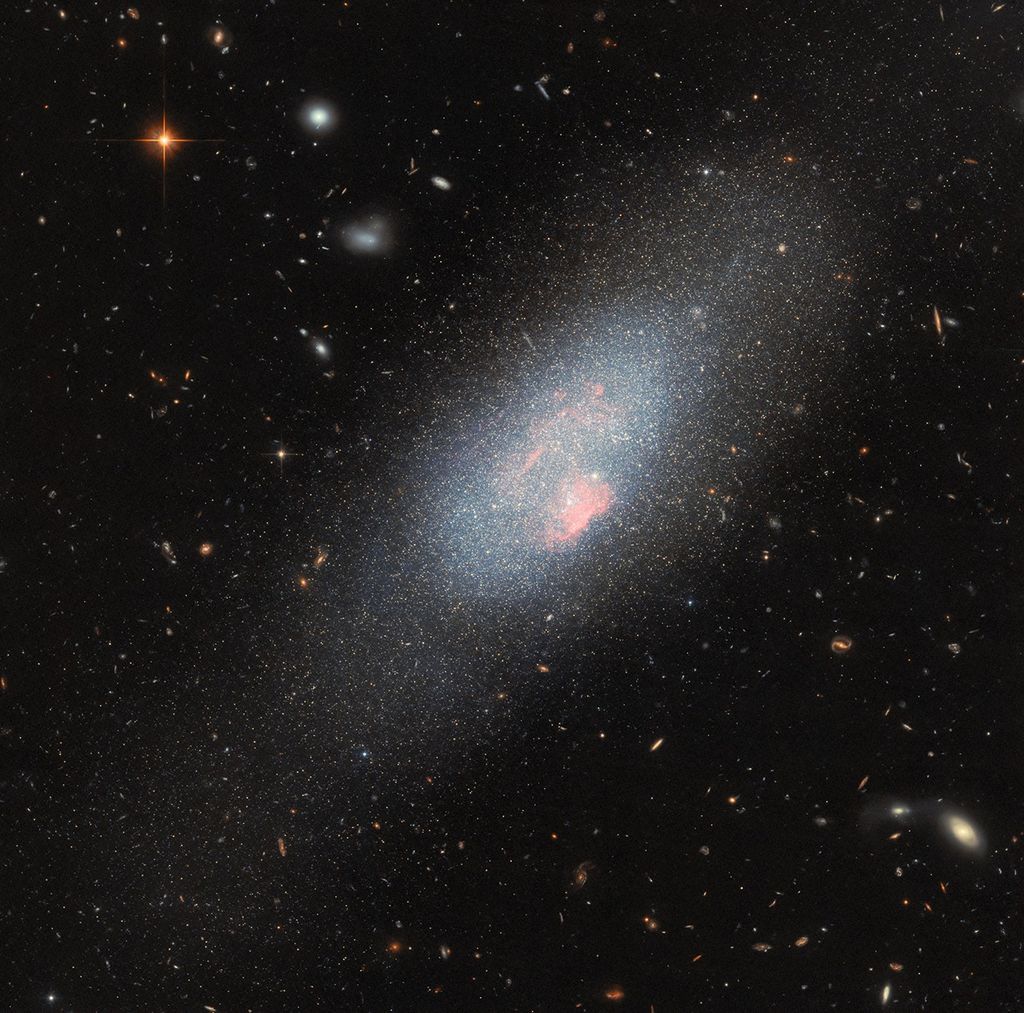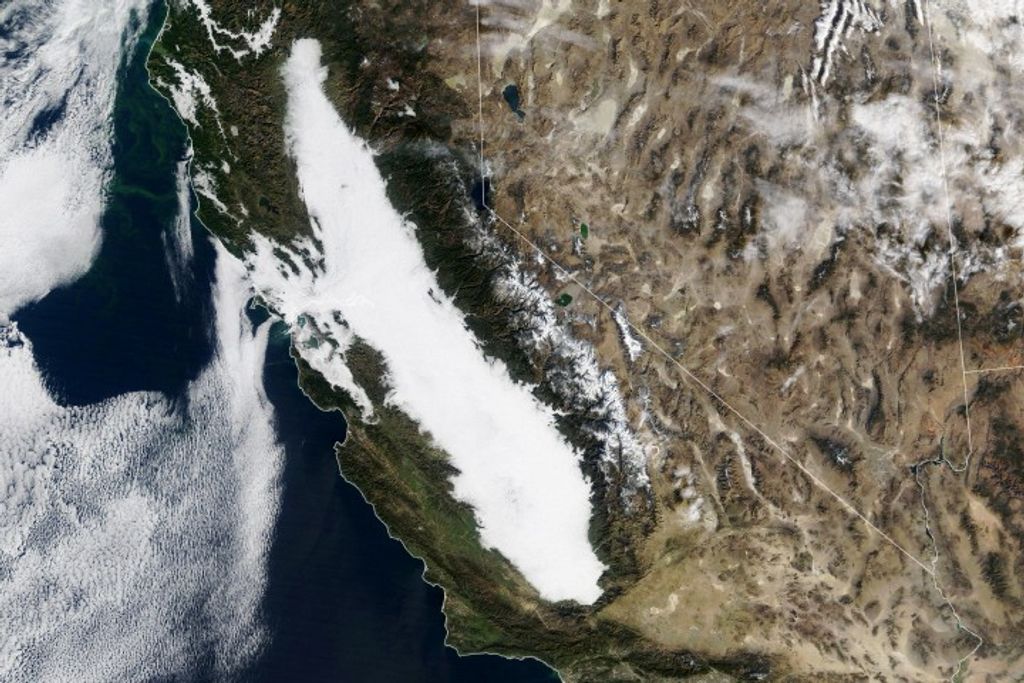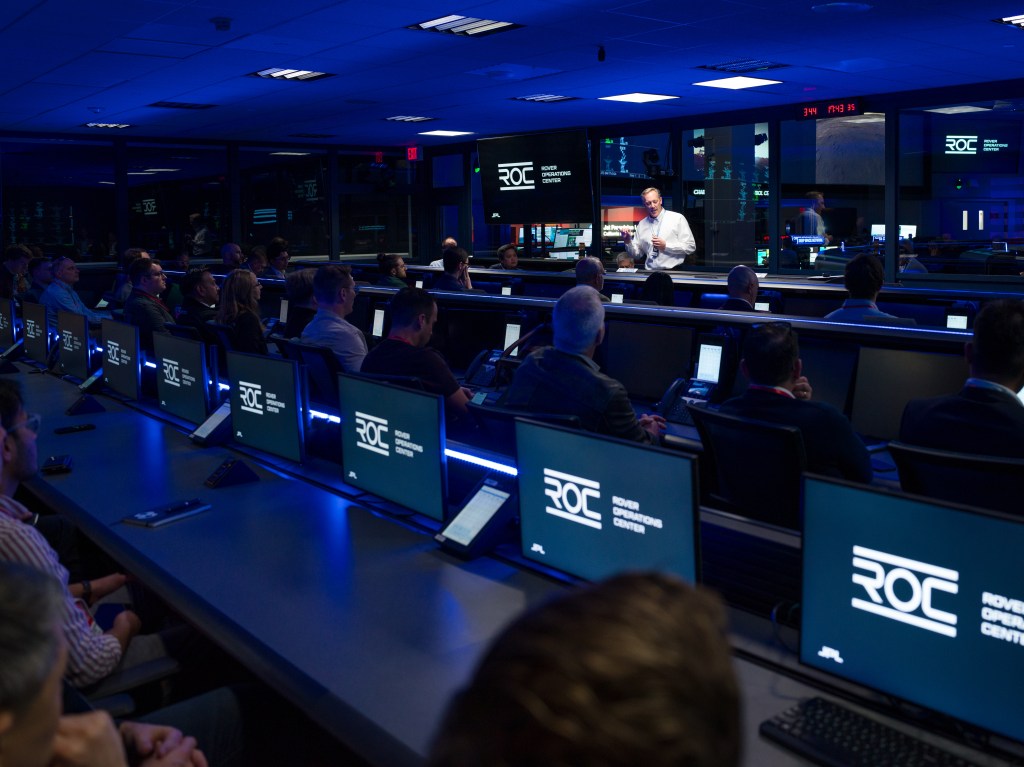1 min read
Compact Core of Galaxy M87

NASA's Hubble Space Telescope clearly shows the central core and accompanying jet of the giant elliptical galaxy M87. This near-infrared image was taken with HST's Wide Field and Planetary Camera (WF/PC), in high resolution mode, on June 1, 1991. The image is being presented on Thursday, January 16th at the 179th meeting of the American Astronomical Society in Atlanta, Georgia.
The steady increase in brightness of M87 towards its center is readily apparent in the image, showing that the stars in MS7 are strongly concentrated towards its nucleus, as if drawn into the center and held there by the gravitational field of a massive black hole. Theoretical models suggest that the structure of M87 is consistent with a central 2.6 billion solar mass black hole. High resolution spectroscopic observations are now needed to confirm this possibility.
The spot of light directly at the center of M87 is not due to starlight, but appears to be a visible counterpart of the strong nuclear radio source. The nuclear emission appears to be produced by hot plasma interacting with magnetic fields and is perhaps generated by a super hot disk of infalling gas expected to surround the black hole. This accretion disk is presumably also the source of the plasma jet which extends for more than 5,000 light years from the nucleus.
Also visible in the image are a number of faint starlike sources scattered about the center. These are globular clusters orbiting within M87, each composed of 100 thousand to 1 million stars.
About the Object
- R.A. PositionR.A. PositionRight ascension – analogous to longitude – is one component of an object's position.12h 30m 49.42s
- Dec. PositionDec. PositionDeclination – analogous to latitude – is one component of an object's position.12° 23' 27.99"
- Object NameObject NameA name or catalog number that astronomers use to identify an astronomical object.M87
- Release DateJanuary 16, 1992
- Science ReleaseNASA’s Hubble Space Telescope Probes the Compact Nucleus of Galaxy M87
- CreditTod R. Lauer, Sandra M. Faber/NASA; Investigators: Tod R. Lauer (NOAO), Sandra M. Faber (CSC), C. Roger Lynds (NOAO), and the Wide Field/Planetary Camera Imaging Team
Share
Details
Claire Andreoli
NASA’s Goddard Space Flight Center
Greenbelt, Maryland
claire.andreoli@nasa.gov


